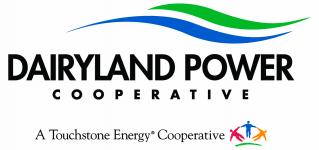Since 2007, Dairyland Power Cooperative has invested nearly $300 million for state-of-the-art air emissions control equipment and other environmental investments at its Genoa Station #3 (G-3) and John P. Madgett (JPM) coal-fired power plants. G-3 was located in Genoa, Wis., but was retired on June 1, 2021. JPM is located in Alma, Wis. The air emissions control equipment has resulted in a significant reduction in emissions of sulfur dioxide, nitrogen oxides, mercury and particulate matter.
Completed projects
- In June 2023, an outage to overall the turbine at the John P. Madgett generating station was combined with upgrades to Dairyland's precipitator equipment. The precipitator upgrades more than doubled the amount of fly ash Dairyland collects during the coal combustion process. Dairyland markets the fly ash for beneficial reuse where it is recycled as an additive to cement and concrete applications.
- In December 2018, a three-year project concluded, which converted the bottom ash transport process at Dairyland's Alma Site to a closed-loop system. The system utilizes leachate from Dairyland’s Alma Off-Site (AOS) disposal area as make-up water to the system, which transports bottom ash from the John P. Madgett (JPM) boiler to the ash dewatering system. It also allows the ash processing system at the Baghouse and Precipitator Silos to utilize bottom ash water instead of water from other sources. Due to normal evaporation, it is estimated up to 25,000 gallons of water are required daily to maintain normal operation. The new system significantly reduces the amount of groundwater required to operate the boiler bottom ash system.
- A Selective Catalytic Reduction (SCR) system at JPM has been operational since April 2016 (see graphic at right). This system uses an aqueous ammonia reagent and catalyst to react with and reduce the amount of nitrogen oxides (NOx) in the flue gas. The ammonia reacts with nitrogen oxide, converting it to nitrogen gas and water vapor, thereby reducing the emissions level of NOx.
- In Fall 2020, Dairyland employees developed a way to eliminate the use of steam and water systems with the ammonia injection process. An ammonia direct injection system was installed, using compressed air to atomize the ammonia upon injection into the flue gas stream. This modification reduced the risk of the system freezing up during cold weather operations, which would force the plant offline due to the requirement for air quality control systems to be in service while the plant is operating.
- In 2014, construction of a Dry Sorbent Injection (DSI) system and an Activated Carbon Injection (ACI) system was completed. The DSI system injects sodium bicarbonate (SBC) into the flue gas stream. The SBC reacts with sulfur dioxide and other acid gases, which are then captured by the baghouse. Between them, the DSI and ACI systems reduce sulfur dioxide and mercury emissions.
- In 2007, “baghouses” were installed to remove particulate matter from the exhaust gas stream at both the G-3 and JPM power plants, which resulted in major reductions in particulate matter. The baghouses are in addition to the existing electrostatic precipitators, which capture particulate matter that is recycled as an additive to concrete.
